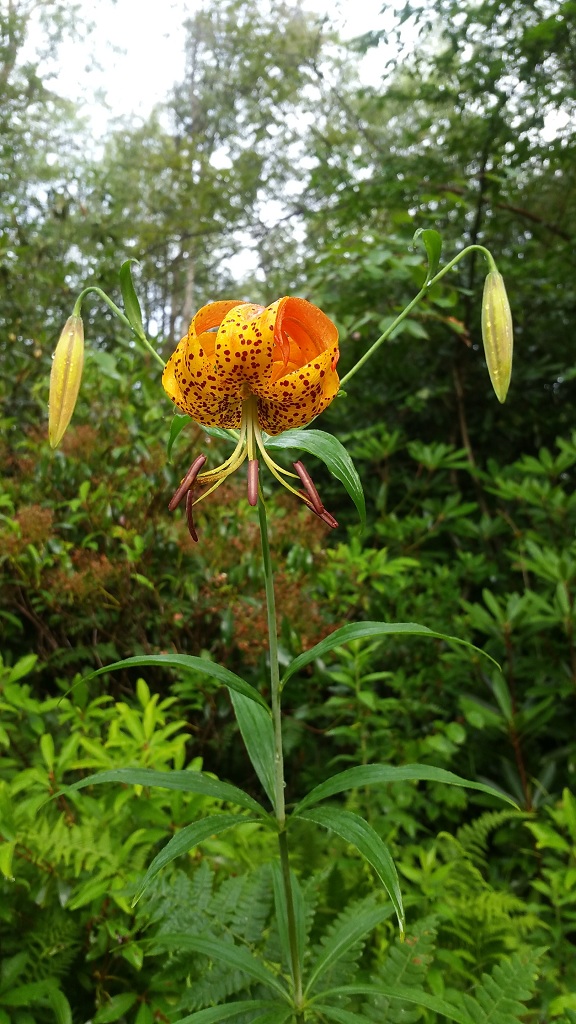
Lilies sure are wonderful! I wish I had words to describe them better. Perhaps I could tell you of my feelings of joy and excitement upon finding some in bloom. Or maybe I could tell you of the sunny summertime days when the lilies flower in their full glory. But it would not be enough.
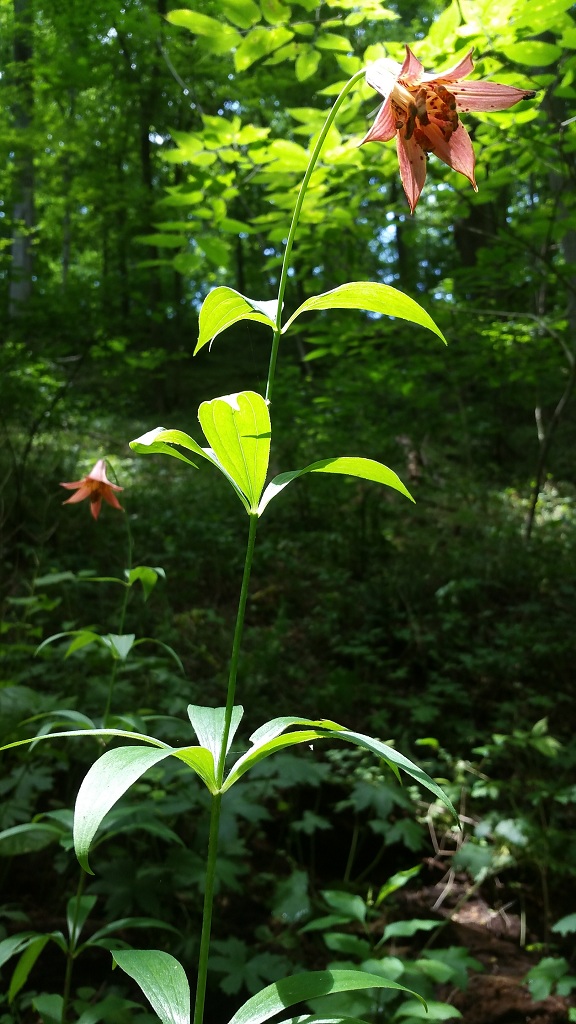
True lilies within the genus Lilium are perennial, though they are relatively short-lived (perhaps no more than 10 years?). Most people are familiar with the garden variety Tiger Lilies (Lilium lancifolium), a native of far east Asia. It’s our native lilies that to me are really fascinating. They can be found all over the continent. In the eastern United States we find Canada lily (Lilium canadense), Michigan lily (Lilium michiganense), Carolina lily (Lilium michauxii), prairie lily (Lilium philadelphicum), pine lily (Lilium catesbaei), Roan lily (Lilium grayi), and Turk’s cap lily (Lilium superbum). In the western United States we find the western lily (Lilium occidentale), panther lily (Lilium pardalinum), Columbia lily (Lilium columbianum), Washington lily (Lilium washingtonianum), redwood lily (Lilium rubescens), and the coast lily (Lilium maritimum). Doubtless there are more species that I cannot recount. (Additionally there are several related genera with similar structure and ethnobotanical uses such as Calochortus, Fritillaria, and Erythronium; many of these share the same family as Lilium, the Liliaceae family.)
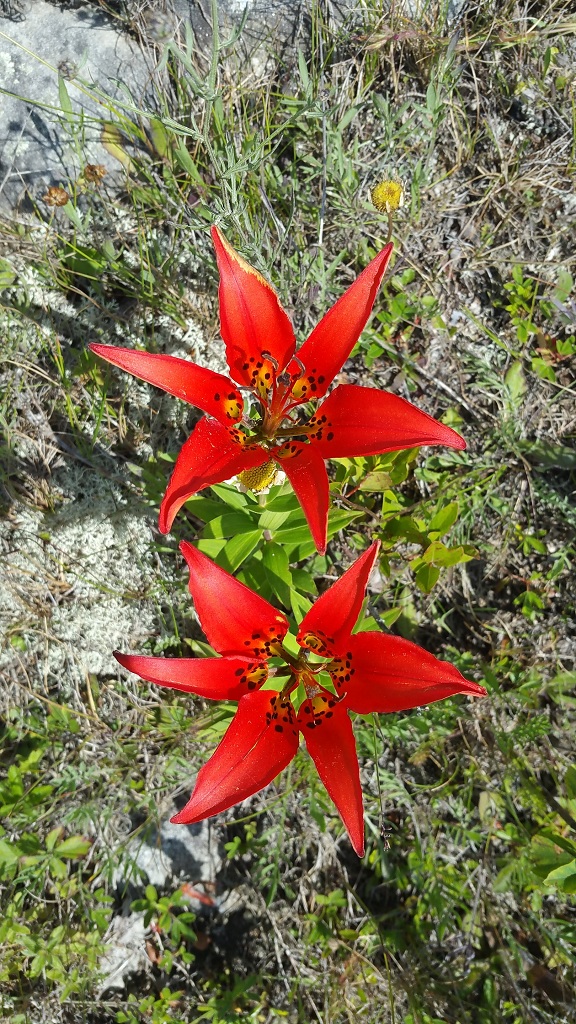
The lilies may be found in a variety of habitats. The prairie lilies (Lilium philadelphicum) pictured above and below were found in dry upland and prairie meadow habitats such as the plateau of Dolly Sods Wilderness in Monongahela National Forest of West Virginia. They bloom there in July into August and at their peak they dot and paint the meadows with vibrant red color.
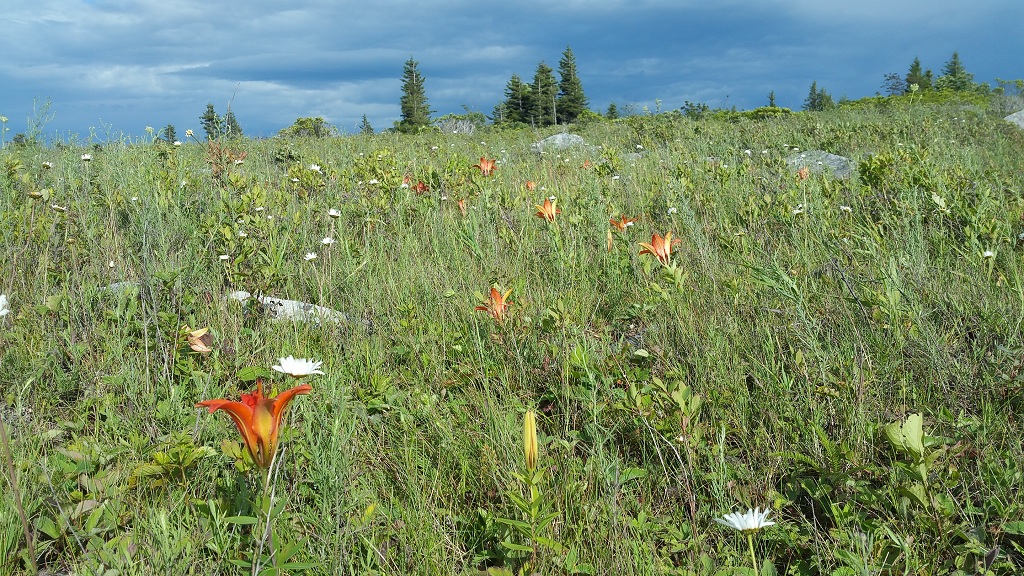
The Turk’s cap lily (Lilium superbum) grows primarily in woodland clearings with full or partial sun and the sunny edges along rivers or along roadsides. I have read that they actually require only about 2 hours of full-sun per day, so consider them fairly shade-tolerant. Older Turk’s cap lilies may display dozens of flowers per plant.
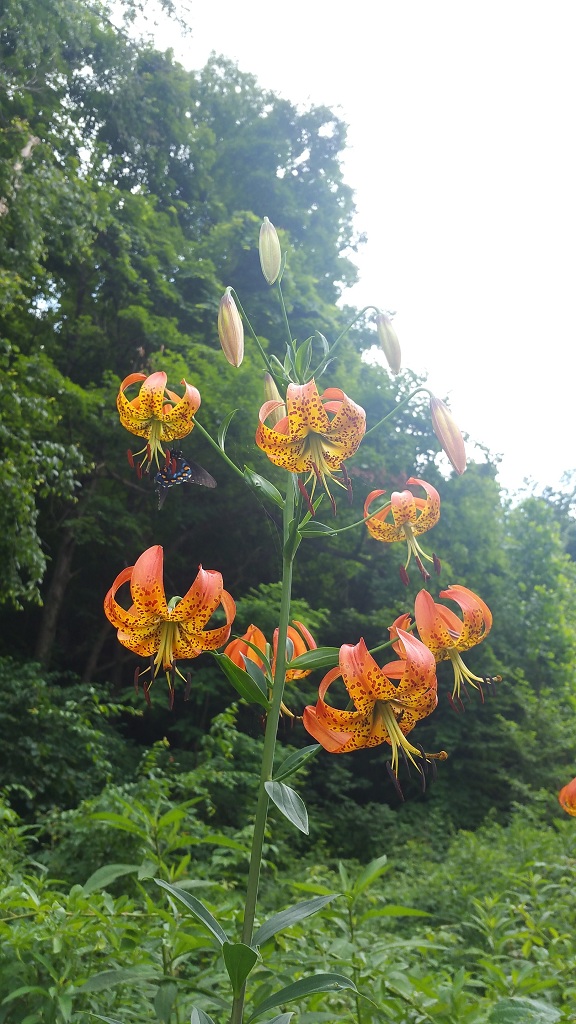
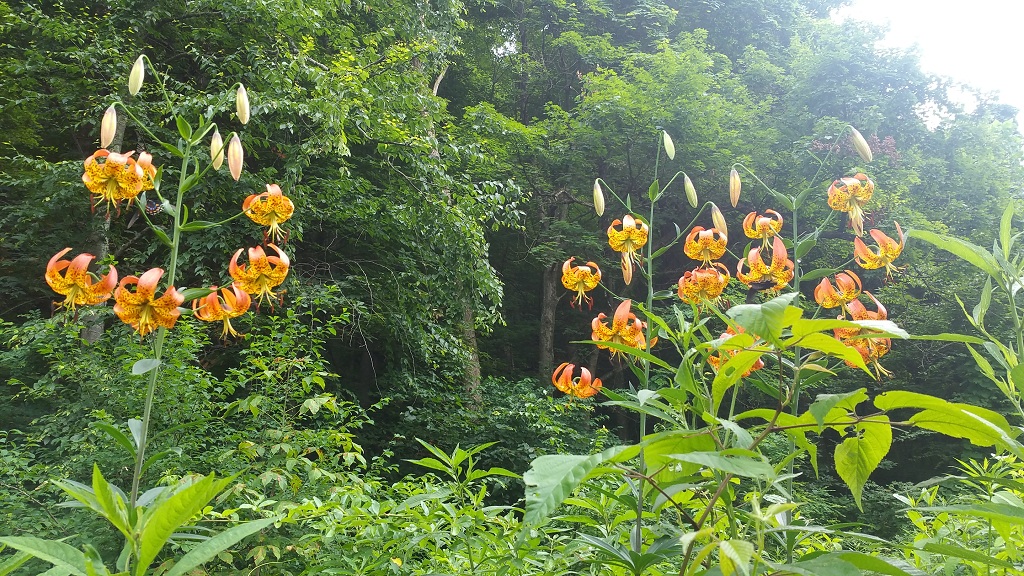
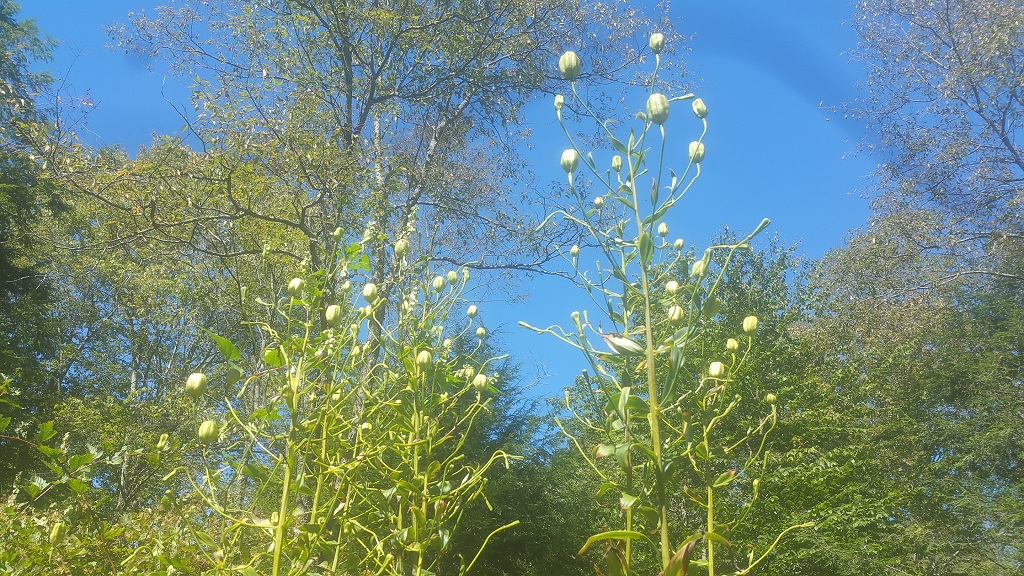
The seed pods of Lilium species form after the flower has been pollinated and stops blooming, usually around August or so. The seed pod needs about six to eight weeks to finish ripening around September and the beginning of October. When it has ripened, it turns brown, and dries out (a process called dessication) and splits to reveal numerous teardrop-shaped seeds stacked in vertical columns.
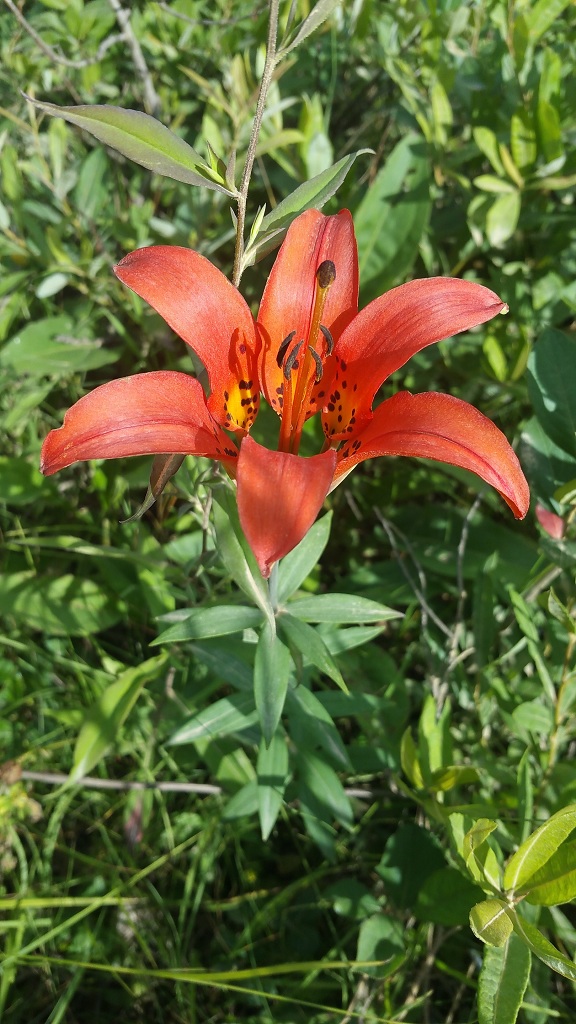
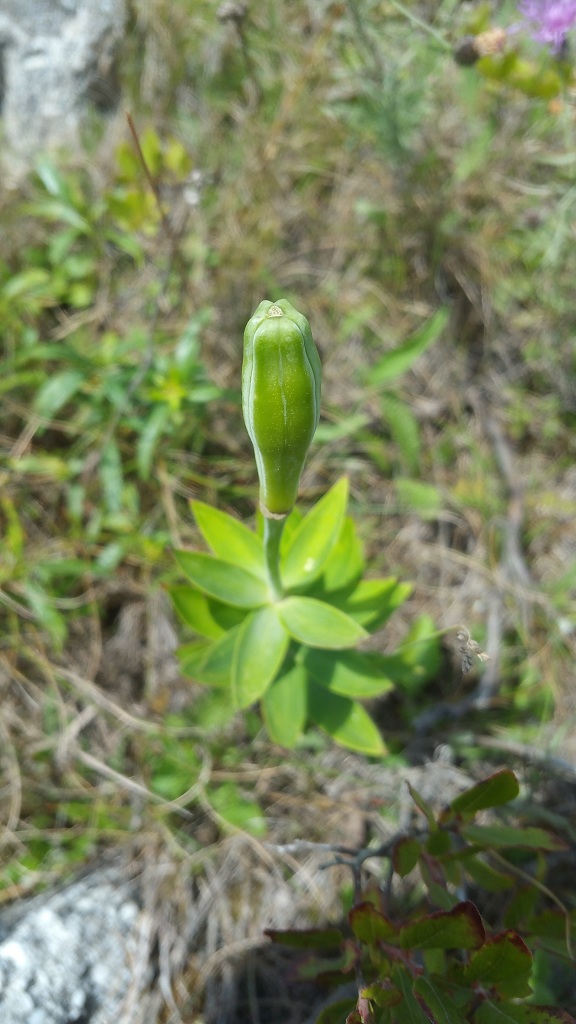
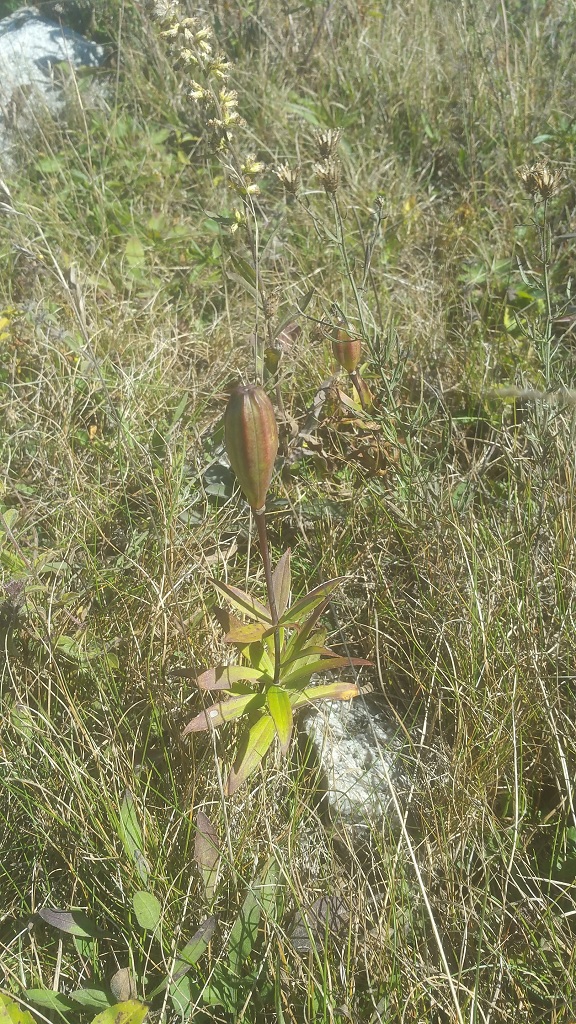
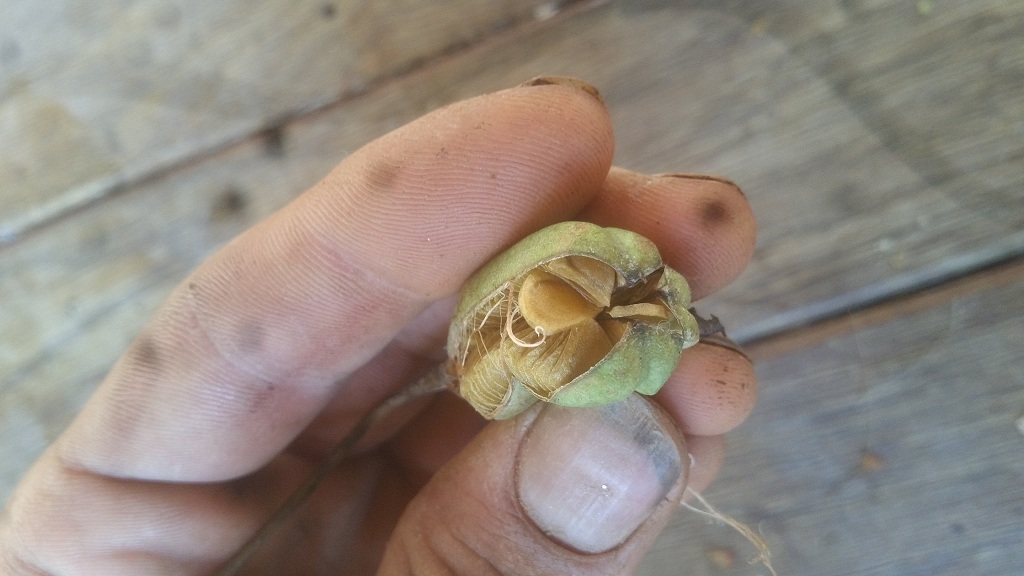
The seeds have a papery coating on them which gives them lift that they may more readily blow about in the wind as a means of dispersal. They are quite easy to store in a cool, dry place out of the light for several months, but they lose viability if stored longer than a year. Germination has some pecularities — when it comes to lilies, folks sometimes talk about “hypogeal” germination. Hypogeal means below ground — in other words, the new plant first focuses on establishing roots before it dare raise a leaf above ground level (but when it does this is called epigeal growth).
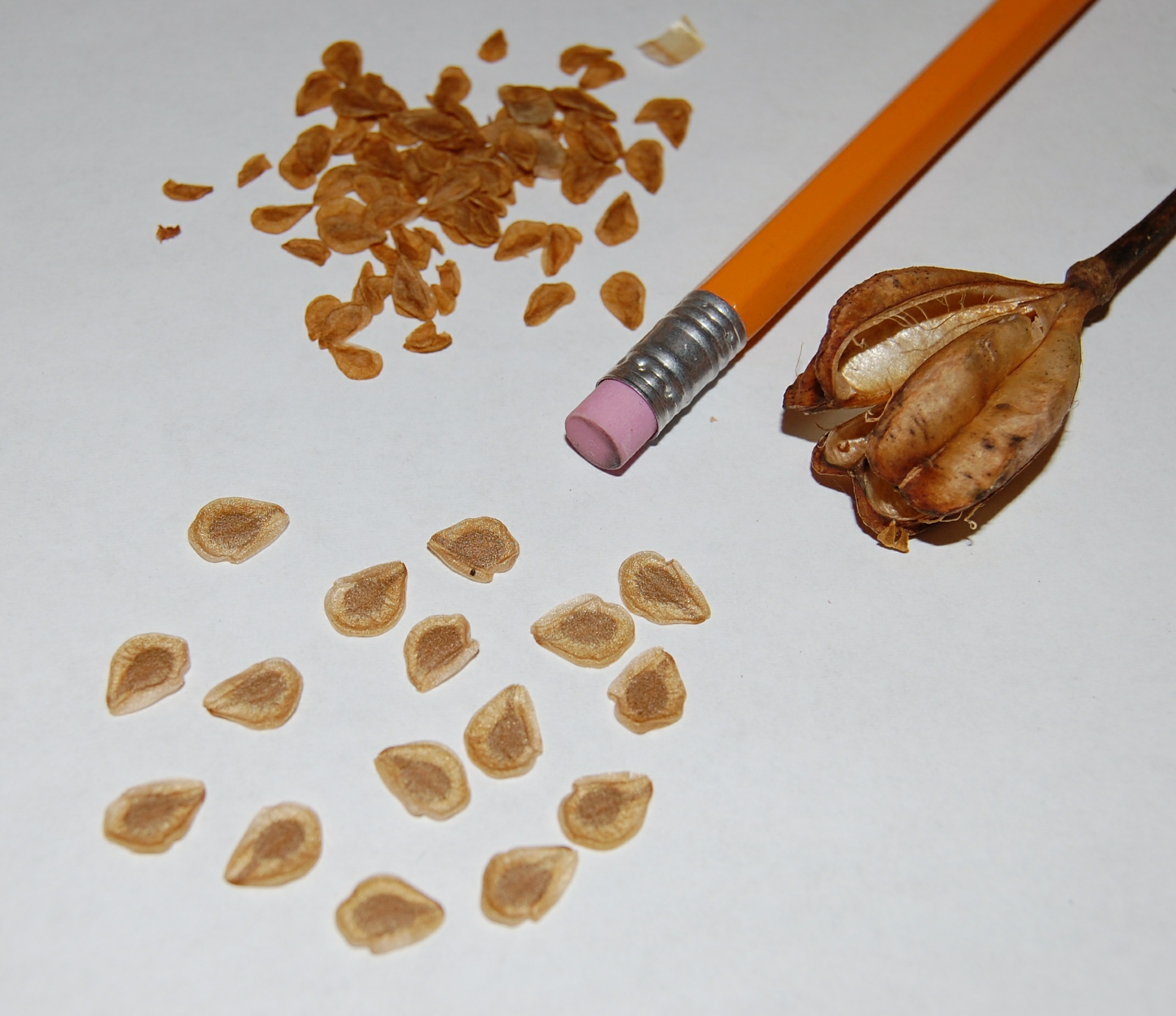
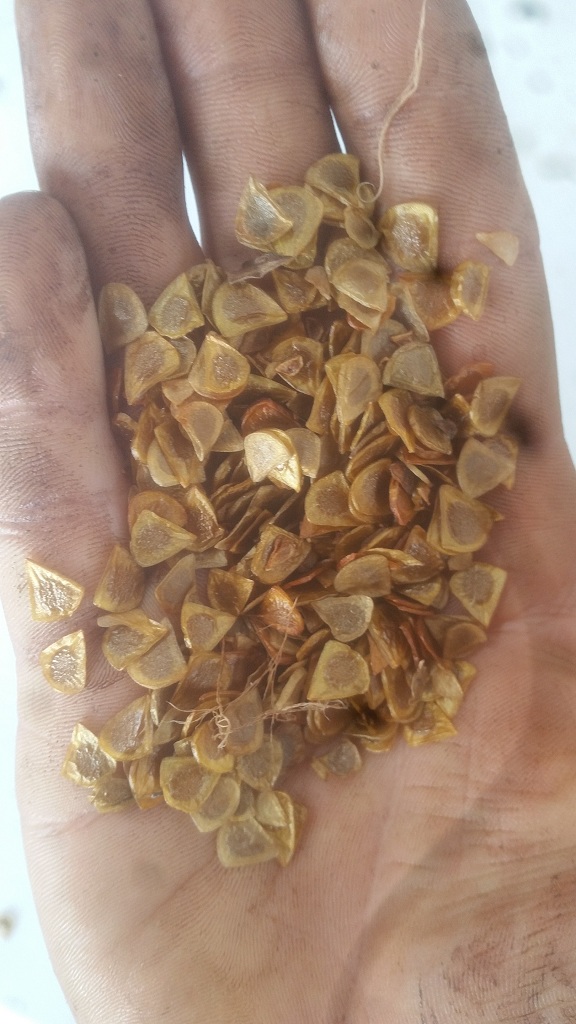
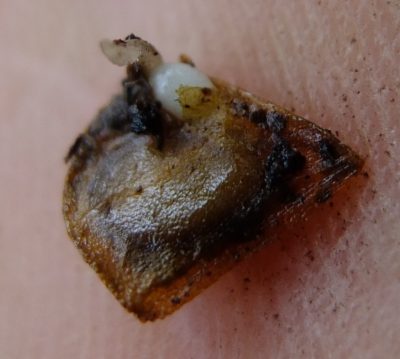
In the following two pictures are some of the stages of growth of young Lilium plants. In the picture below, we see the single leaves of new emerging plants. The lilies are monocots, therefore, their first-year leaf presents itself in the singular. In the years following, the plant beings its ascent upwards as a rising stem unfolds a whorl of leaves in distinct circles. By the fourth or fifth year the plant might begin to flower.
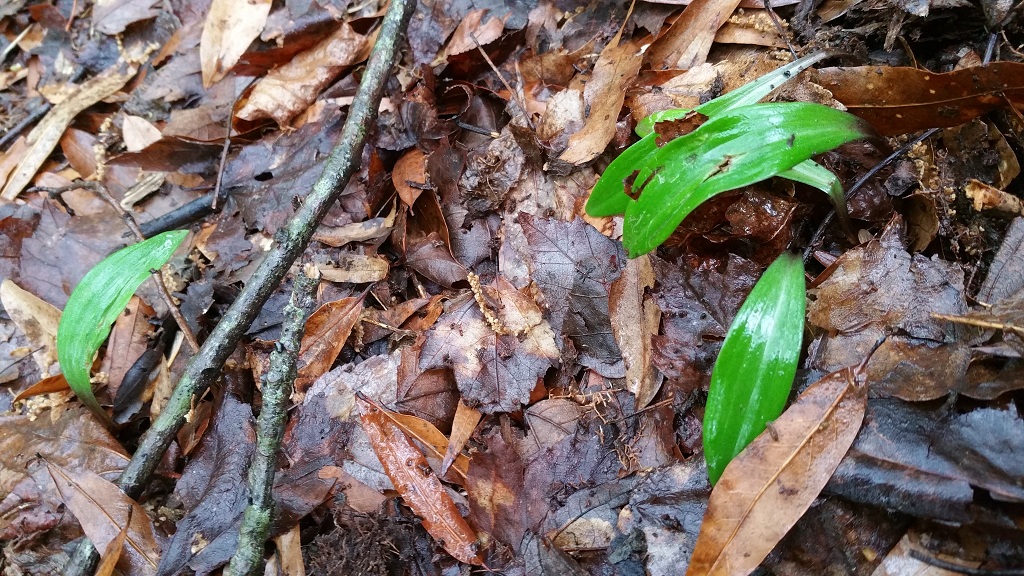
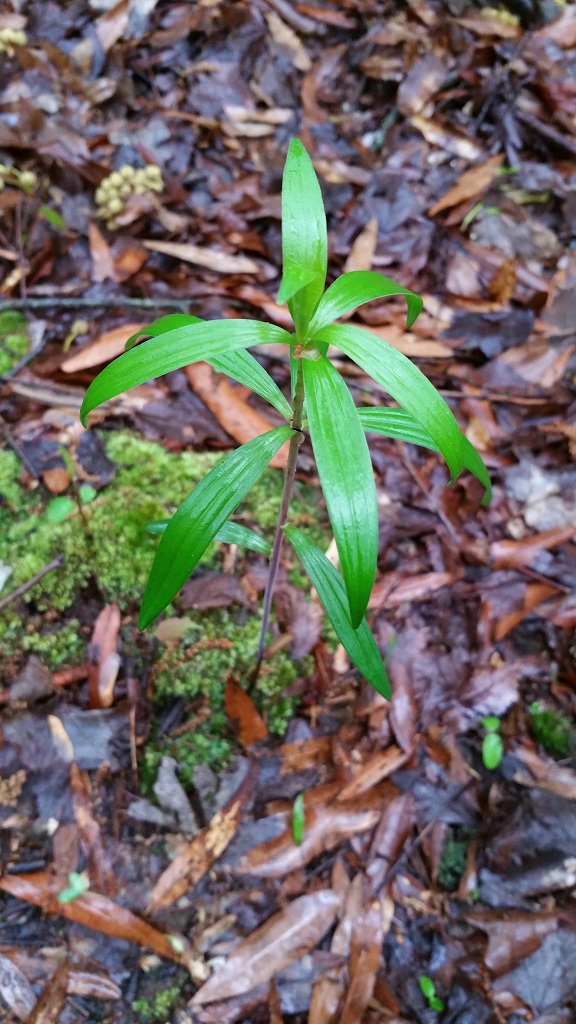
Another way to propagate lilies is by corm division. What’s the difference between a corm, a tuber, and a bulb anyhow, you ask? Good question. A corm is defined as something like the underground swollen base to the stem. From it the roots grow, and the corm itself is covered in little scale-like things that are essentially bud or leaf scars. A bulb is a fleshy spherical organ at the base of the plant that is storage for winter dormancy. A bulb is made up of layers, just like an onion. A tuber, by contrast, is an underground storage organ that doesn’t really fit the description for corm or bulb. Its storage organ is generally more versatile, but also more uniform in structure. One learns to notice the difference between the three, but precise definitions are tricky and sometimes overlapping.
Anyhow…
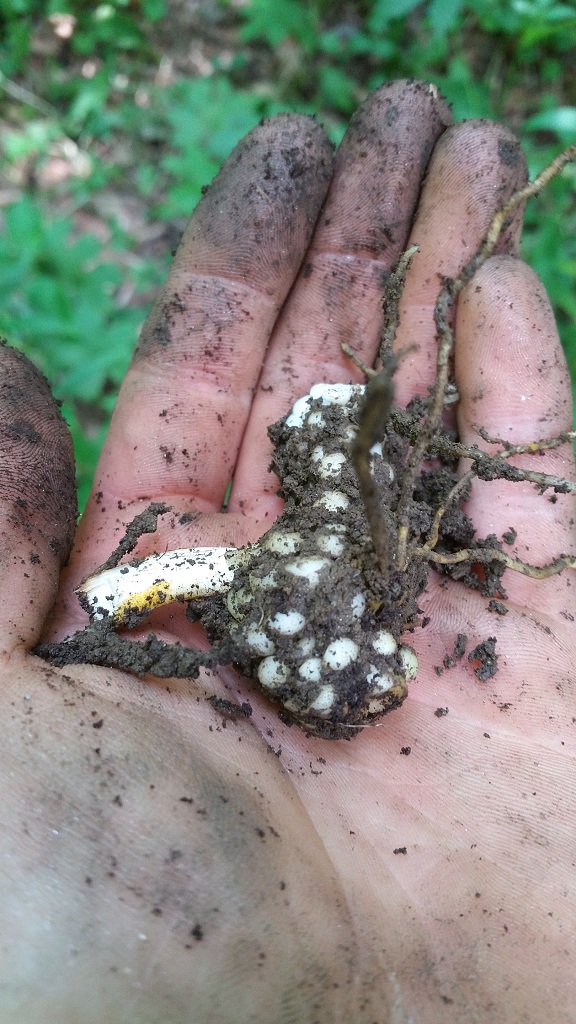
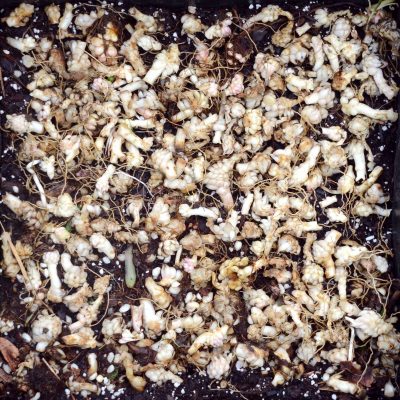
In the pictures above, we can see how each lily corm is covered in dozens of little cormlets. This is an adaptation to disturbances such as digging. When the corm is disturbed, many of these little cormlets break off the mother, and a chemical signal is sent within each of them that will trigger sprouting. In such a way the plant can clone itself dozens of times! This ability practically encourages digging. Indeed, as M. Kat Anderson writes in Tending the Wild: Native American Knowledge and the Management of California’s Natural Resources —
“When California Indians dug up the parent bulbs or corms, the bulblets or cormlets — many of which were tenuously attached to the parent — were detached and remained in the soil to grow. Those that were not knocked off in the digging process were intentionally removed. The digging sticks churned and broke up the soil in the collecting patch, aerating it and dispersing the detached bulblets and cormlets. Thus the little offsets found themselves in ideal conditions for rapid growth into mature plants. This process, carried on for millennia, ensured each successive year’s harvest.”
She goes on to note the research of botanist Frederica Bowcutt, who states that,
“Redwood lilies [Lilium rubescens] occur mainly in forest openings created by limited logging and in berms of loose soil created by annual grading of a dirt road in and near the park. [..] It is conceivable that the redwood lily was at one time more abundant when large bulbs were periodically harvested and bulblets were left to repopulate the tilled soil. The grading may in part mimic the effects of agroecological methods used by indigenous peoples. Grading aerates the soil, as does the traditional digging of bulbs by native people for food.”
As a food source, the cooked lily corms are fantastic. The texture is crisp like a carrot and starchy like a potato. The flavor is faintly sweet but otherwise fairly nondescript. Lilium corms have an ethnographic history as a staple food, and based on my personal experience with this plant it comes as no surprise. I would love to see a nutritional breakdown, but for now I will have to settle for my intuition which tells me that it is healthy and filling.
The lily is a perfect candidate for reintroduction and rewilding for so many reasons. Beyond it’s beauty and ecological function, it serves as a first food and responds well to digging and disturbance.
It must be noted that digging alone ought to be considered not enough action to ensure the regenerative growth of lily patches. It is important that seed-scattering also occur for the sake of genetic diversity. Clones are sexually incompatible with each other on the individual level, and too many clones grown from only a few distinct genetic individuals will over time result in inbred populations. The indigenous way to kill two birds with one stone is to dig the lily corms after the seedpods have turned brown at the end of the summer or beginning of autumn and are already drying and ready to spill their seed. This also happens to be the period of time when the corm is the largest as a result of being allowed to grow all season, as we saw also in the case of ramps or wild leeks (Allium tricoccum). Therefore, while digging each corm, leave behind in the ground the cormlets and make it a point also to intentionally scatter the seed from out of the pods. This is regenerative harvesting; this is symbiosis!